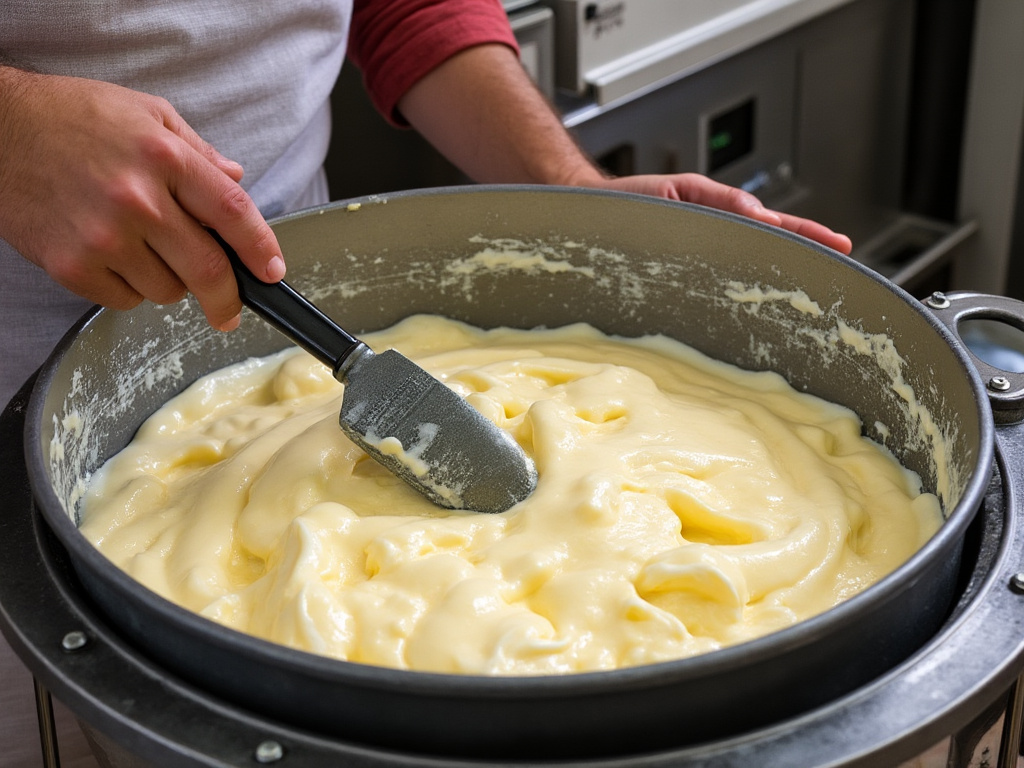
Making cheese at home can be a rewarding process. Here’s a basic guide for making a simple soft cheese, like a version of paneer or ricotta, which are good starting points for beginners:
Ingredients:
- 1 gallon of whole milk (not ultra-pasteurized, as it won’t curdle properly)
- 1/4 cup of vinegar or lemon juice (for paneer) or 1 teaspoon of citric acid dissolved in 1/4 cup water (for ricotta)
- Salt to taste (optional)
- Herbs or spices (optional, for flavor)
Equipment:
- Large pot
- Thermometer (optional but helpful)
- Cheesecloth or fine mesh strainer
- Colander
- Large spoon or ladle
- String or clip for hanging (if making paneer)
Steps:
- Heat the Milk:
- Pour the milk into a large pot and heat it slowly over medium heat. If you have a thermometer, aim for about 190-200°F (88-93°C) for ricotta or just until it starts to simmer for paneer. Stir occasionally to prevent scorching.
- Add the Acid:
- Once the milk reaches the desired temperature or begins to simmer, lower the heat. Add your acid (vinegar, lemon juice, or citric acid solution). Stir gently to mix. You should see the milk start to curdle almost immediately, separating into curds and whey.
- Let It Sit:
- Turn off the heat and let the pot sit for about 5-10 minutes to allow the curds to fully separate from the whey.
- Strain the Curds:
- Line a colander with cheesecloth and place it over a large bowl or sink. Pour the curds and whey into the cheesecloth.
- For Ricotta: You might want to let it drain for a few minutes to an hour, depending on how dry you want your cheese.
- For Paneer: Gather the ends of the cheesecloth and squeeze out more whey. Then, you can tie it up and hang it for 30 minutes to an hour to drain further, or press it under a weighted plate for a couple of hours to form a more solid block.
- Salt and Flavor (Optional):
- If you’re using salt or any herbs and spices, mix them into the cheese after draining but before pressing if you’re making paneer.
- Pressing (for Paneer):
- If making paneer, after hanging, place the wrapped cheese under something heavy to press it into a firmer block. This can be done in the fridge for several hours or overnight.
- Refrigerate:
- After achieving the desired consistency, refrigerate your cheese. Ricotta can be used immediately or stored in the fridge for a few days. Paneer can be cut into cubes and used in cooking or eaten as is.

Tips:
- Milk Quality: The better the quality of milk, the better your cheese will be. Organic, grass-fed milk can give you a richer flavor.
- Acid Choice: Different acids will give slightly different flavors. Lemon juice offers a fresh taste, vinegar is more neutral, and citric acid can be very consistent for ricotta.
- Experiment: Once you get the hang of basic cheese making, you can experiment with different milks (like goat or sheep), add-ins, or even try aging processes for harder cheeses.
Remember, cheese making can be as much an art as it is a science, so don’t be discouraged if the first batch isn’t perfect. Each attempt will teach you something new!

